Product roadmaps are communication tools that ensure short-term technical tasks are progressing toward long-term business goals. Oftentimes, product owners create high-level epics that developers break down into user stories and requirements. This hierarchy simplifies decisions and creates a common understanding of how daily tasks fit into the big picture.
Let’s take a look at five tools that you can use to build better product roadmaps, as well as some best practices to make the most of them.
Product roadmaps are a great way to keep business and technical teams on the same page—here are five of our favorite tools to create them. Share on X#1. Airfocus
Airfocus helps you build product roadmaps and prioritize features. Using customizable criteria, stakeholders across the project can vote on items and hold asynchronous discussions to maximize buy-in and calculate a democratic priority score for each feature. The platform also makes it easy to share product roadmaps, as well as integrate with various third-party tools.
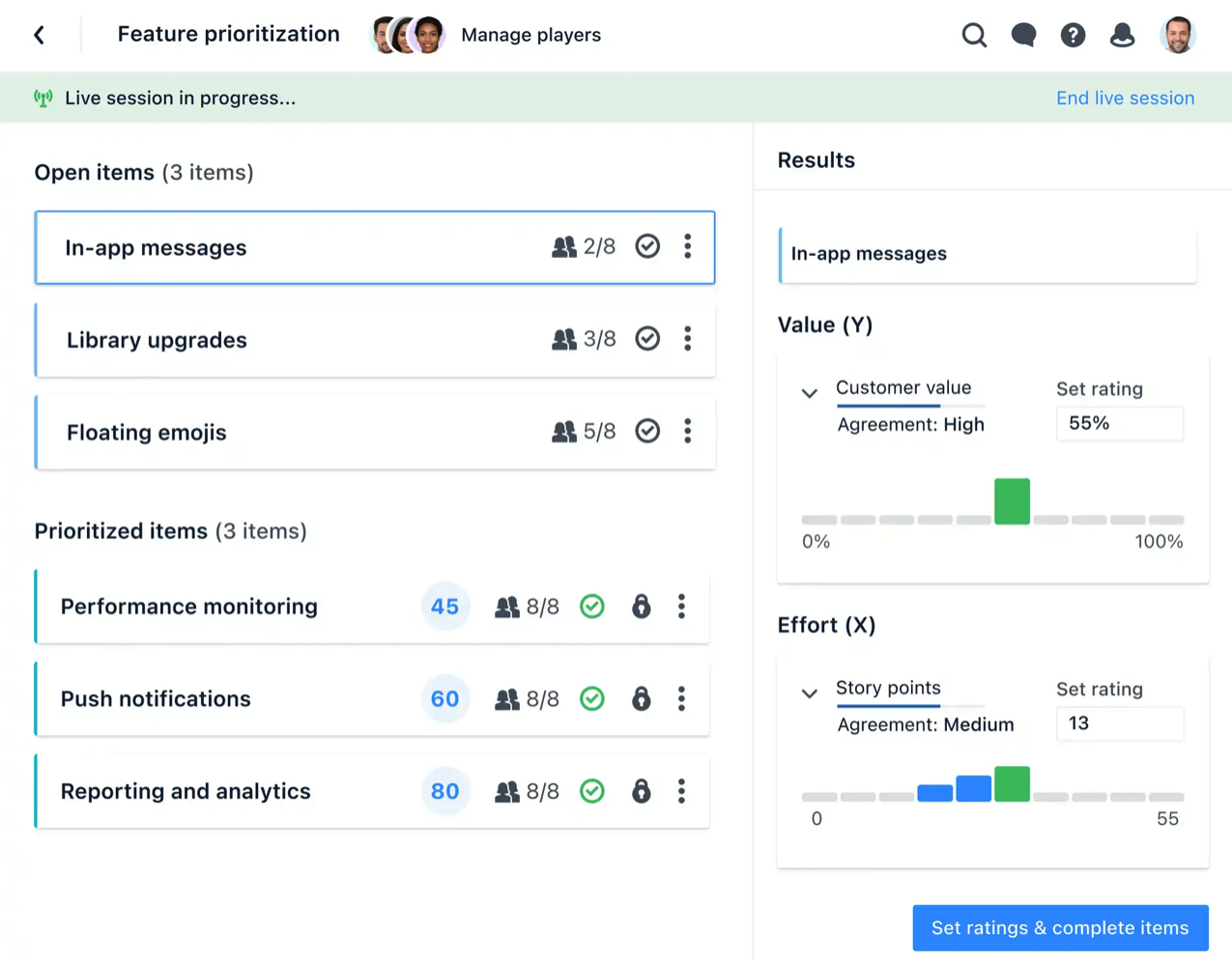
Airfocus makes it easy to prioritize features based on value and effect. Source: Airfocus
#2. Craft
Craft is a comprehensive tool that can help you build roadmaps and collaborate across teams. With the ability to create everything from high-level strategic roadmaps to detailed product specs, the platform brings together a lot of different capabilities under the same roof, which can simplify collaboration and minimize cognitive overhead.
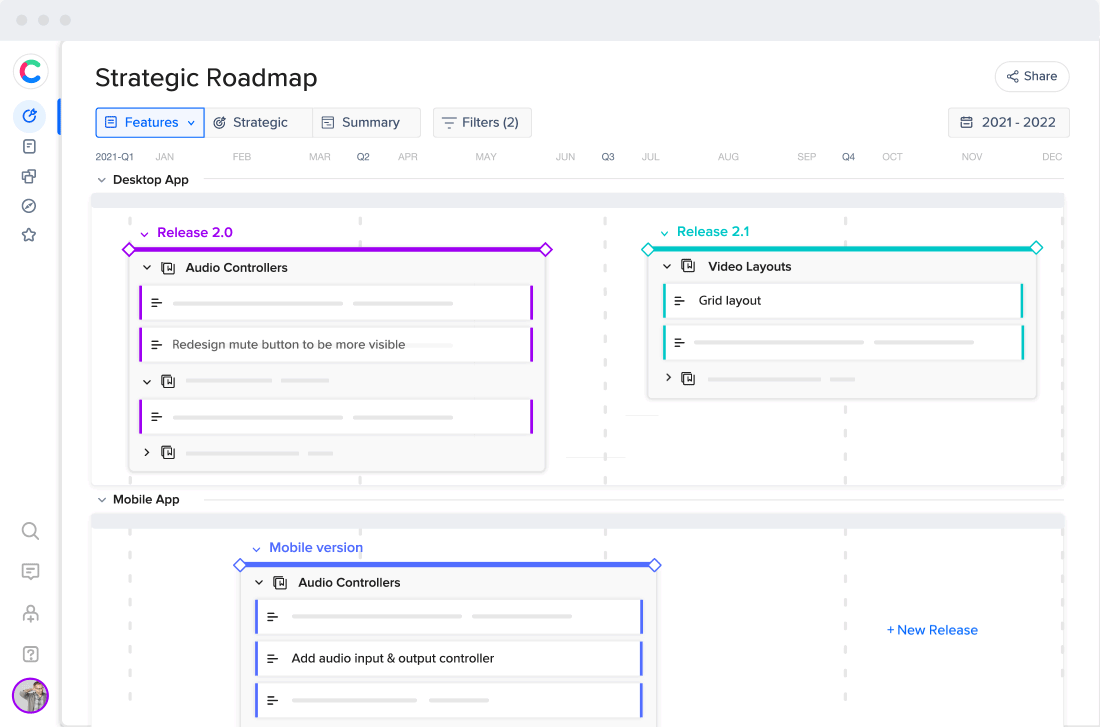
Craft has an intuitive and easy-to-use interface to build roadmaps. Source: Craft
#3. ProductBoard
ProductBoard focuses on aggregating customer feedback from a variety of different sources and using that feedback to build a product backlog. In addition to collaborating with an internal team, the platform makes it easy to validate feature ideas, share updates and capture new ideas with a public roadmap, which can help keep users active and engaged.
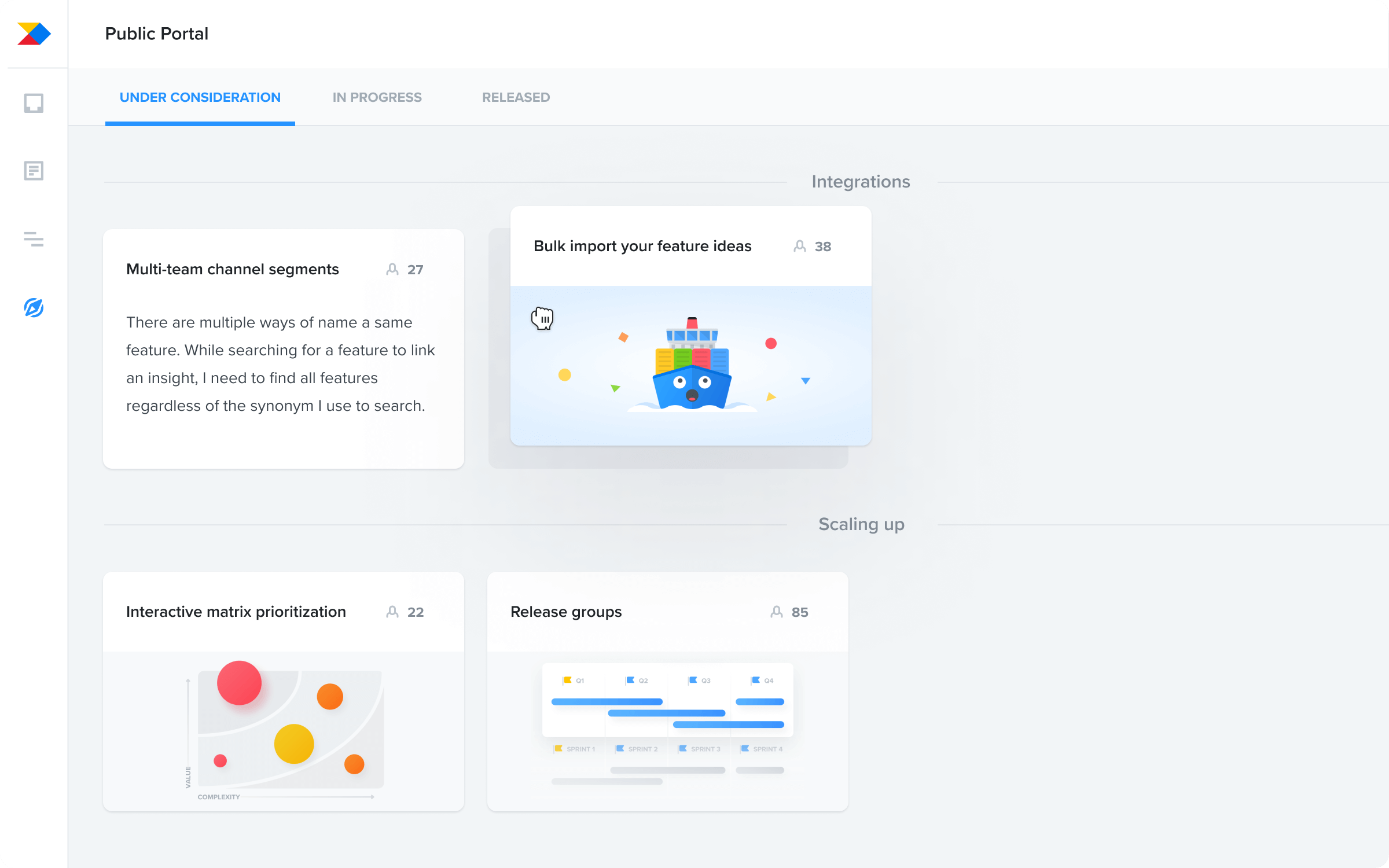
ProductBoard’s Public Portal makes it easy to involve users in decisions. Source: ProductBoard
#4. Aha
Aha makes it easy to define business goals and high-level initiatives with time-tested templates and then track progress. In addition to its unique high-level roadmaps, the platform also provides an idea portal for customers to submit their ideas, which are then scored based on product strategy to help spot important trends.
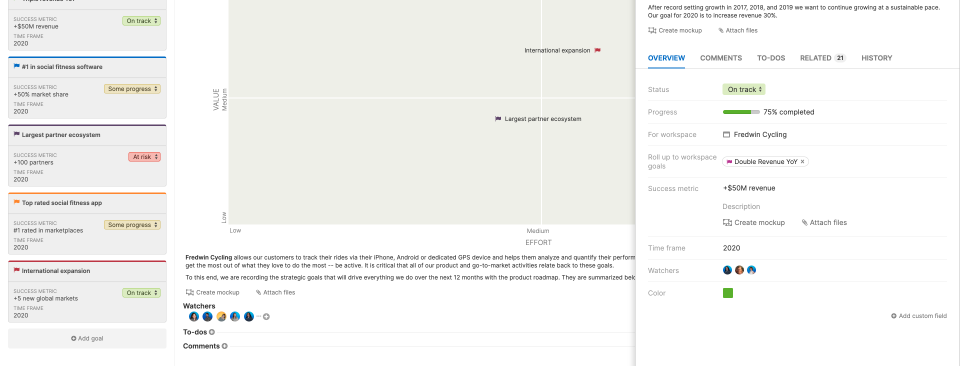
Aha provides high-levell strategy tools to keep your organization on track. Source: Capterra
#5. Monday
Monday bills itself as a Work OS with a wide range of tools for project management, marketing, creative design, software development and hundreds of other workflows. If you’re already using the platform for these other workflows, or have requirements for more workflows, it might be a great tool to use for product roadmaps, too.
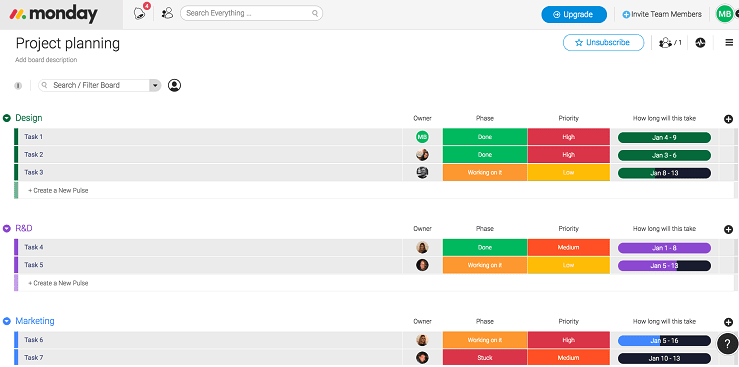
Monday’s planning templates are great if you already use the tool elsewhere. Source: Monday
Roadmap Best Practices
The right road-mapping tool can make a big difference in the quality of roadmaps and their usefulness in an organization—but it’s not the only thing that matters. There are several other best practices that can help ensure that roadmaps are relevant, up to date and useful to both business-facing and technical teams working on a project.
Some best practices to keep in mind include:
- Make regular updates. Roadmaps aren’t very useful when they’re out of date. In fact, they can be misleading to stakeholders. The right frequency of updates depends on the project’s development stage with early startups requiring more frequent updates than mature projects where there is less uncertainty.
- Make it realistic. Roadmaps should be ambitious enough to push the team to do their best work but realistic enough to avoid constantly missing deadlines. Public roadmaps, in particular, should under promise and overdeliver to delight customers rather than disappoint them with constantly missed deadlines.
- Assign a single owner. A single person should be responsible for decision-making when it comes to maintaining a product roadmap. Oftentimes, that person is the product manager, but in smaller companies, it might be the development team lead or even the business owner of the project.
- Be consistent. Product roadmaps should have a consistent feel in terms of design and copywriting while the process of adding backlog items, prioritizing backlog items and pulling them into development should be streamlined. That way, there’s no question of what to do next or other concerns that can derail development.
Get Help Planning
Product roadmaps are often the difference between good and great. When used properly, they can ensure that everyone is working towards the same goal with the same priorities. When used improperly, they can not only create pointless extra work for the product manager, but confuse stakeholders and developers.
Of course, tools aren’t very useful without knowing how to properly use them. Organizations that are new to product roadmaps or would like extra guidance when building them may want to consult experts to help fill knowledge gaps and ensure it’s done properly, including finding and hiring remote developers without regret.
Sharkbyte specializes in high-quality roadmaps that outline every step, programming language, deadline and stakeholder involved in your project to maximize success. Whether you’re building software internally or use us as your developer, we can help you get started on the right foot to finish on time and on budget with the features and functionality you want.
Contact us today to schedule a free consultation.
The Bottom Line
Product roadmaps are an essential communication tool in the software development process. With the right tools in place, they are an important way to ensure that business and technical teams—and customers in the case of public roadmaps—are on the same page when it comes to the product’s functionality and the prioritization of backlog items.
If you’re looking for help developing roadmap, Sharkbyte provides high-quality roadmaps to maximize your success. We also provide team augmentation and application development services. Contact us today to discuss your project.



